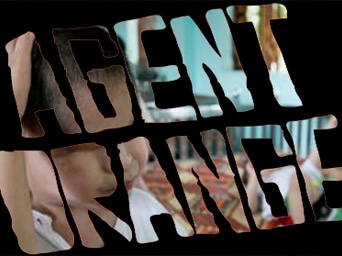But after the war, some of the planes were used on cargo missions in the United States. Now a bitter fight has sprung up over whether those in the military who worked, ate and slept in the planes after the war should also be compensated. Two U.S. senators are now questioning the Department of Veterans Affairs’ assertions that any postwar contamination on the planes was not high enough to be linked to disease.
Citing tests done on some of the aircraft in the 1990s, North Carolina Sen. Richard Burr, the ranking Republican on the Senate Veterans’ Affairs Committee, and Sen. Jeff Merkley (D-Ore.), have asked the VA’s Office of Inspector General to review whether the department is “inappropriately” denying disability compensation to veterans who claim they were sickened by postwar contamination.
“It appears that [the VA] does, in fact, plan to deny any C-123 claims regardless of the evidence submitted in a particular case,” the senators wrote. The letter notes that a group of outside experts have called the VA’s scientific conclusions “seriously flawed.”
The Air Force says the planes’ destruction was handled properly.
“Because of the potential stigma associated with these aircraft, the Air Force ensured that the recycling of the aircraft was accomplished completely and that the metal was not stored improperly or abandoned prior to being smelted,” an Air Force statement said.
The C-123s were used to spray Agent Orange from 1962 to 1971 as part of Operation Ranch Hand. After the war, about 1,500 Air National Guard and Reserve crew members flew the planes on cargo missions in the United States until the last aircraft were retired in 1982.
The Air Force aborted plans to sell some of the planes in 1996, after evidence surfaced that 18 of them might still be contaminated with TCDD dioxin, a carcinogen associated with Agent Orange, according to Air Force documents and papers filed with the General Services Administration’s Board of Contract Appeals. The planes were quarantined instead in Arizona at a storage facility at Davis-Monthan Air Force Base, nicknamed “the Boneyard.”
The Air Force did not notify the post-Vietnam crews or Boneyard employees of the potential risk, according to Air Force documents.
When tests on four of the quarantined planes in 2009 showed little or no remaining dioxin, the Air Force decided it was safe to destroy the aircraft.
Officials at Hill Air Force Base in Utah, which oversaw the planes, approved a consultant’s recommendation in 2009 to “dispose of/recycle the 18 UC-123K ‘Agent Orange’ aircraft as soon as possible to avoid further risk from media publicity, litigation, and liability for presumptive compensation,” according to a base memo in August 2009.
CLICK TO READ MORE >>>>>>
ATTENTION READERS
We See The World From All Sides and Want YOU To Be Fully InformedIn fact, intentional disinformation is a disgraceful scourge in media today. So to assuage any possible errant incorrect information posted herein, we strongly encourage you to seek corroboration from other non-VT sources before forming an educated opinion.
About VT - Policies & Disclosures - Comment Policy
Due to the nature of uncensored content posted by VT's fully independent international writers, VT cannot guarantee absolute validity. All content is owned by the author exclusively. Expressed opinions are NOT necessarily the views of VT, other authors, affiliates, advertisers, sponsors, partners, or technicians. Some content may be satirical in nature. All images are the full responsibility of the article author and NOT VT.




